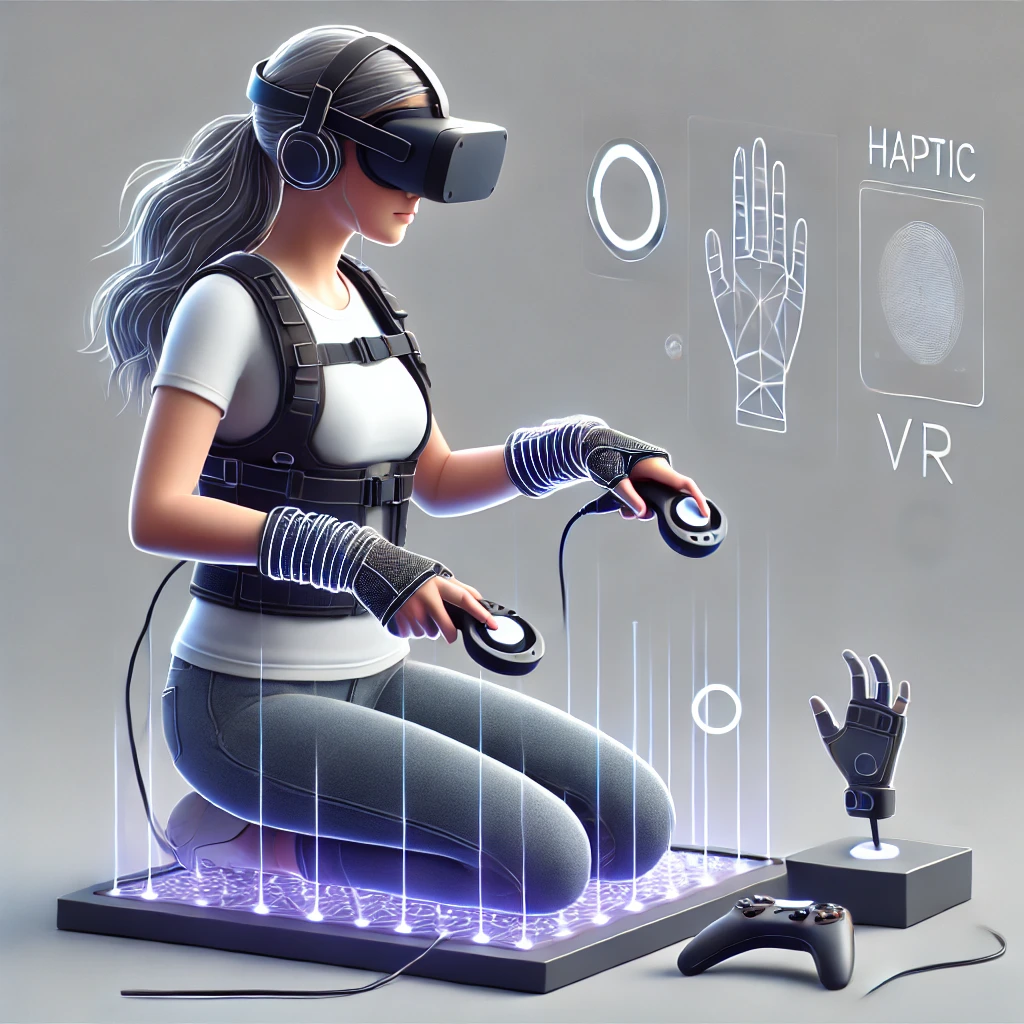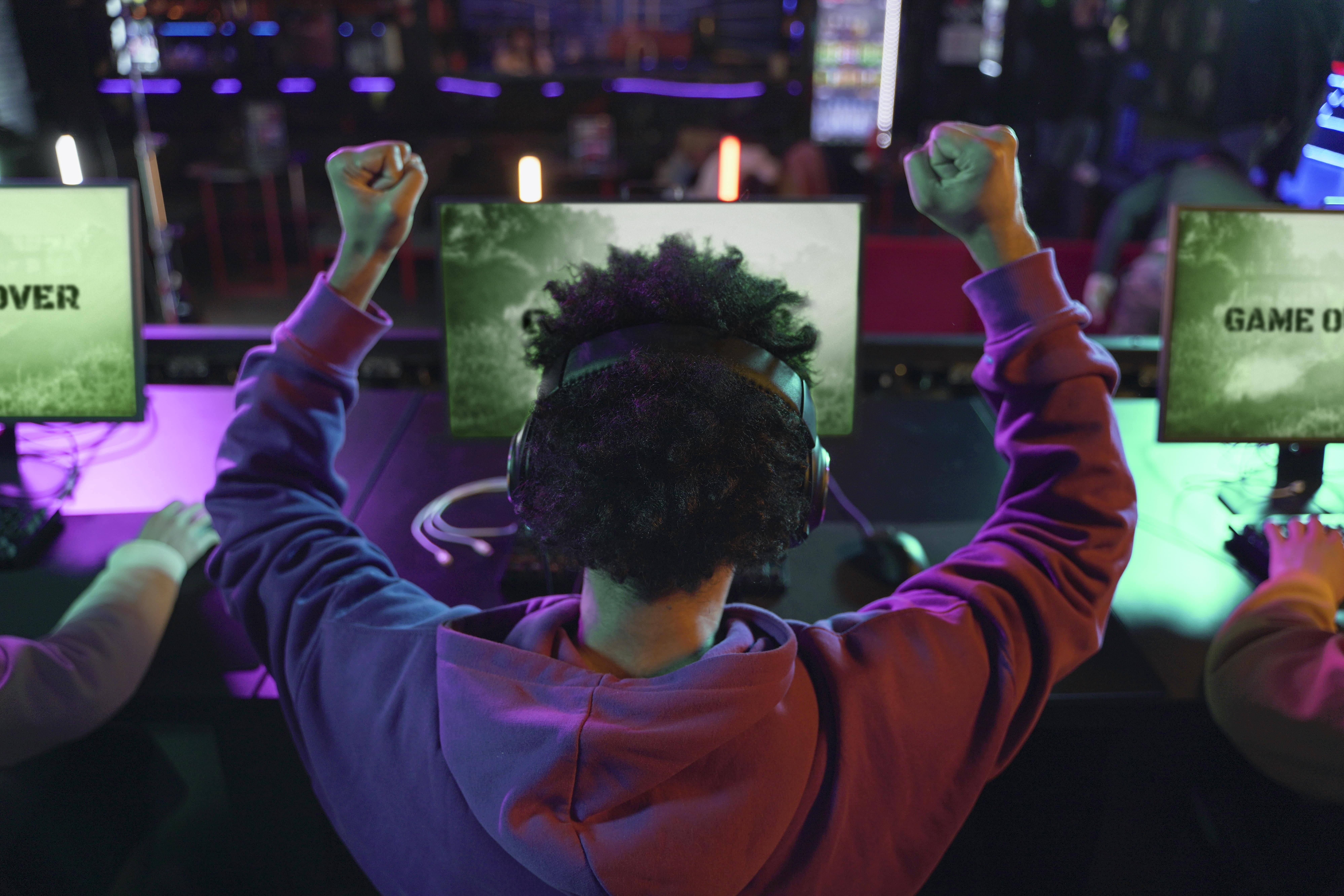
Haptic Technology in Gaming
Gaming technology keeps getting better and better, especially with the addition of haptic feedback. Haptic technology lets players feel physical sensations while they play, making games feel more real. When you play, the controller vibrates or moves in response to what’s happening on screen. This makes gaming more exciting and believable, whether you’re using a regular console or VR headset. What started as a simple add-on has become a key part of modern gaming, making the experience more lifelike than ever before. Following our previous article, “A Quick Review on The Hexagon That Shapes The Future of Gaming Technology” this article delves deeper into the world of haptic technology.
What is Haptic Technology?
Haptic technology refers to the use of physical sensations, such as vibrations, forces, or motions, to help you feel virtual things. It can be as simple as your phone vibrating or as complex as feeling different textures and temperatures. In video games, haptic technology lets players feel what’s happening in the game, making it more real.
Haptic technology relies on various devices, including vibrating motors, actuators, and sensors, built into game controllers, headsets, gloves, and gaming chairs. Some special suits can even give feedback to your whole body. All of these help make virtual experiences feel more real.

The Rise of Haptic Technology in Gaming
Gaming has used haptic feedback for many years—starting with the first rumblings of vibration in controllers. However, recent improvements have made this technology much better at enhancing gameplay. Today’s haptic technology goes far beyond simple vibrations. They can make players feel different weights, surfaces, and movements, making games feel more real than ever before.
Gaming companies are making big improvements in haptic technology. Sony, Microsoft, and other companies are creating new ways for players to feel what’s happening in their games. These advances help make games feel more real and exciting. Let’s take a closer look at how haptic technology is being used to create more immersive and engaging gaming experiences.
Haptic Technology and Console Gaming
A prominent example of haptic technology in gaming is its use in console controllers. The PlayStation 5, for instance, introduced the DualSense controller, which includes advanced haptic feedback and adaptive triggers. These features enable players to experience a range of sensations, such as the texture of different surfaces when walking and the tension of pulling a bowstring in action-adventure games.
DualSense Controller and Advanced Haptic Feedback
The PlayStation 5’s DualSense controller has received high praise for its innovative use of haptic technology. Unlike simple vibrations, Sony’s haptic feedback provides players with a rich assortment of textures and sensations. For instance, in a racing game, players can feel the resistance of the brake pedal and the distinct sensation of driving on gravel. During combat, the adaptive triggers adjust their resistance depending on the weapon being used, resulting in a more hands-on and engaging experience.
Sony’s success with the DualSense controller showcases the potential of haptic technology to deepen player immersion. It illustrates how haptic feedback can make a game’s physical interactions feel more real, ultimately enhancing the overall gaming experience.
Xbox and the Evolution of Haptic Technology
Microsoft’s Xbox controllers now include haptic feedback, building on their traditional vibration responses. With the launch of the Xbox Series X/S consoles, the controllers have improved their haptic technology, offering more responsive and detailed vibrations. The main upgrade is the introduction of Impulse Triggers and vibration motors that deliver localized feedback. This enhancement creates a more varied and immersive gaming experience.
While not as advanced as the PlayStation 5’s DualSense controller, Xbox controllers effectively integrate haptic feedback. This feature is particularly beneficial in racing games, shooting games, and exploration titles, where in-game feedback greatly enhances player immersion.
Haptic Technology in Virtual Reality (VR)
As gaming has started to use virtual reality more, haptic technology has become very important.VR aims to put players in a whole new world, and haptic feedback helps make that world feel real. When players touch virtual objects, they want to feel something real, like the kick of a gun or the push of a door when they try to open it.
Haptic Gloves and Full-Body Suits
Besides regular controllers, developers are trying out haptic gloves and full-body suits that give feedback to the whole body. These tools are made to create more realistic experiences, like feeling how heavy something is, its texture, or the effects of an event in a game.
For example, in a VR game, haptic gloves can let you feel what it’s like to touch or hold virtual things. Full-body suits can make you feel things like getting hit or a breeze, making the experience feel more real. This is especially helpful for training, fitness games, or any VR experience that wants to feel more lifelike.
The Future of Haptic VR Gaming
Haptic technology has great potential in VR gaming. Systems like HTC Vive and Oculus Rift are starting to use basic haptic feedback, and this will improve with advancing technology. Imagine feeling a weapon’s weight, sensing textures as you touch objects, or experiencing virtual wind on your skin.
As VR evolves, combining immersive visuals with advanced haptic feedback will make experiences more realistic and exciting.
Haptic Technology and Mobile Gaming
Mobile gaming now includes haptic technology to enhance user experiences. While mobile devices are generally limited by their size, manufacturers have managed to incorporate simplified haptic feedback into mobile devices.
Vibrations and Tactile Feedback
Most mobile devices use vibration motors for basic haptic feedback. In mobile games, this feedback simulates actions like a car’s engine revving, a character jumping, or impacts. These sensations make gameplay more engaging and responsive. Games like PUBG Mobile and Fortnite enhance gunfire and explosions with haptic feedback for added realism.
The Potential for Advanced Haptic Feedback on Mobile Devices
Advancements in mobile technology will likely lead to better haptic feedback in smartphones and tablets. This may enhance tactile sensations in gaming and integrate with future VR/AR technologies.
The Impact of Haptic Technology on Player Immersion
Haptic technology in gaming mainly appeals because it boosts immersion. The better a game simulates real-world feelings, the more engaged players become. Players seek a connection with the virtual world, and haptic feedback helps connect reality to the game.
Haptic feedback enhances various aspects of gaming, including:
- Sensory engagement: Experience textures, weights, and impacts.
- Realistic interactions: Sense tension in triggers, resistance in objects, and force from virtual actions.
- Emotional connection: Enhance experiences with the joy of victory or the tension of danger.
Incorporating tactile feedback in gameplay deepens player engagement with the story, characters, and environment.

The Future of Haptic Technology in Gaming
The future of haptic technology in gaming is exciting. As it advances, we can expect more immersive experiences. Soon, ultra-realistic haptic suits may simulate touch, temperature, force, and texture. VR systems could fully integrate with haptic feedback for a lifelike experience.
Additionally, adding haptic feedback to augmented reality (AR) will create new opportunities for mobile gaming. With ongoing experimentation in this field, player immersion will increase, making gaming more engaging than ever.
Conclusion
Haptic feedback, seen in the PlayStation 5’s DualSense controller, VR experiences, and mobile gaming, is transforming gaming. As this technology advances, players will enjoy more realistic and engaging experiences that deepen their emotional connection to games.
By innovating further, haptic technology will significantly shape the future of gaming, providing richer and more thrilling experiences.
This article reviews the evolution of haptic technology in gaming, highlighting its essential role in enhancing immersion. It’s clear that haptic technology is vital for the next level of gaming experience.


